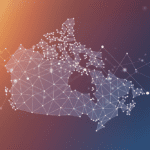Access to information is a human right and is a key element of democracy. Expensive journal paywalls and restrictive copyright laws are barriers to information access that hinder education and the advancement of scientific research, especially in developing countries. Open access publishing facilitates access to scientific and medical research that, in many cases, is needed to address global health problems such as child mortality, malaria, HIV/AIDS, and other diseases.
For example, barriers to accessing research articles played a role in impeding the efforts to stop the recent Ebola outbreak. Research findings published several decades ago indicated that Liberia should be included in the Ebola virus endemic zone. However, Liberian healthcare providers and policy-makers couldn’t afford to pay the fees to access the information that could have helped prevent the epidemic and save thousands of lives.
In the midst of the outbreak, researchers at the Broad Institute in Cambridge, Massachusetts, urged the scientific community to develop standards and practices for sharing data and making outbreak research open access. Citing their own experience of sharing genomic data in the public database GenBank, they showed how open access can facilitate collaborations with drug and vaccine developers to create effective diagnostics and therapies to combat diseases.
One of the core values of librarianship is providing access to information, but it is increasingly difficult to fulfill this mission due to rising subscription costs and shrinking library budgets. Large commercial publishers are monopolizing the scholarly publishing market while reaping high profit margins. Due to consolidation in the scientific publishing industry, five major publishers now publish 53% of scientific papers in the natural and medical sciences, forming an oligarchy that dominate smaller non-profit publishers.
These large multinational publishers sell bundled journals subscriptions to library consortia known as “big deals”, which allow libraries to provide access to a large number of online journals to researchers at discounted prices. However, the subscription costs increase annually and libraries are struggling to adjust their budgets to meet the costs leading to the “serials crisis”.
Contrary to popular belief, developing countries and small research institutions aren’t the only ones unable to afford access to subscription journals. In 2012, Harvard University’s Library revealed that it couldn’t continue to sustain its journal collections due to rising subscription costs, and urged faculty members to support open access as a solution. If the richest university library can’t afford academic journal subscriptions, how can the rest of us possibly be expected to do so?
Sure enough, Canadian university libraries have been hit hard with a perfect storm of increasing journals prices, decreasing library budgets, and a weak Canadian dollar. Most of the journals and databases acquired by Canadian libraries are in fact American or European products. For the past year, Canadian libraries have seen their purchasing power decrease drastically and have no choice but to cancel journal subscriptions.
The Université de Montréal Library was the first to make a bold move in cancelling its subscription to Wiley-Blackwell journals, followed by Brock University Library. However, the Brock University Library is reinstating their subscription in 2016 to give themselves more time to conduct a complete assessment of their collections budget and subscriptions. Most recently, Memorial University Library made headlines with their announcement of journal cancellations as they face the reality of unsustainable subscription costs. Expect to see more journal cancellations as library budgets fall behind inflation rates and the Canadian dollar continues to drop.
So where does that leave researchers? Although libraries have a long history of partnerships to provide access to information through interlibrary loans (ILL) services, researchers are finding other ways to gain access to information faster than waiting for ILLs to come through. For example, the “#icanhazPDF” Twitter hashtag is used by researchers to swap scholarly articles. Researchers who don’t have access to an article tweet requests using the hashtag, while those who do have access via library subscriptions email the PDF article in response to the requests.
However, research shows that #icanhazpdf requests are mainly from the US and Great Britain, not the developing countries that one expects would have difficulty accessing subscription journals. The use of #icanhazpdf is problematic for libraries because it violates copyright and database license agreements. Furthermore, bypassing ILL services leads administrators to believe that the service is no longer needed by researchers and is a target for more library budget cuts.
Circumventing publisher paywalls is only a temporary solution that relies on libraries that have access to subscription content. What happens when more and more libraries are forced to cancel their journal subscriptions? Will there be anyone left who can fulfill the requests for articles?
There is growing recognition that open access isn’t only important for academics. Open access materials are valuable resources for promoting science literacy, advancing citizen science, and engaging future scientists. The most well-known example is the story of Jack Andraka, the high school student who developed a new test for pancreatic cancer using open access articles; the growing number of citizen science projects shows that there is an interest in understanding how science affects our daily lives.
Furthermore, Peter Suber has argued that taxpayers have a right to access the results of publicly funded research. Research funded with tax dollars through government grants is written and reviewed by researchers for free, but taxpayers don’t readily have access to university library’s journal subscriptions. In effect, asking members of the public to pay fees to read scientific articles is forcing them to pay twice for the same research.
Open access can enable the general public to become better informed about how research is conducted and how findings should be interpreted. Most people may not read scientific articles, but journalists, bloggers, and other science communicators would benefit from readily accessible research to write articles for the growing number of individuals interested in science.
It’s also important to remember that public opinion has an influence on science policy. In the latest Canadian election, funding for basic science became a major issue and likely changed the course of history. Cuts to research funding, library closures, and muzzling scientists resulted in a successful campaign, led by the advocacy group Evidence for Democracy, encouraging voters to restore Canada’s research capacity. Clearly, it’s in researchers’ best interests to ensure the public has access to scientific information and understands the importance of research.
Open access facilitates new avenues of research and innovation in ways that can’t be predicted, so it’s unfair that only researchers at institutions that can afford costly subscriptions should have access to scholarly publications. As Jon Tennant recently pointed out, “open” is about equality and removing barriers to education, healthcare, scientific development, and democracy.




